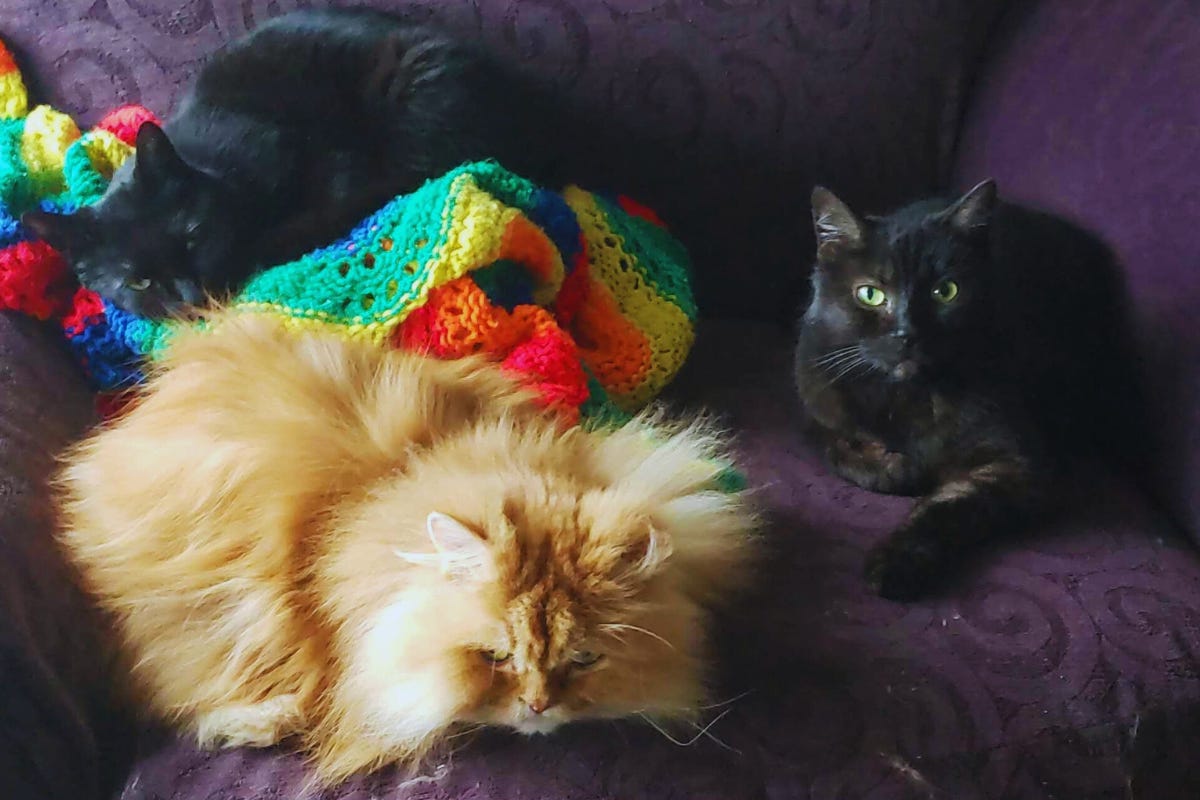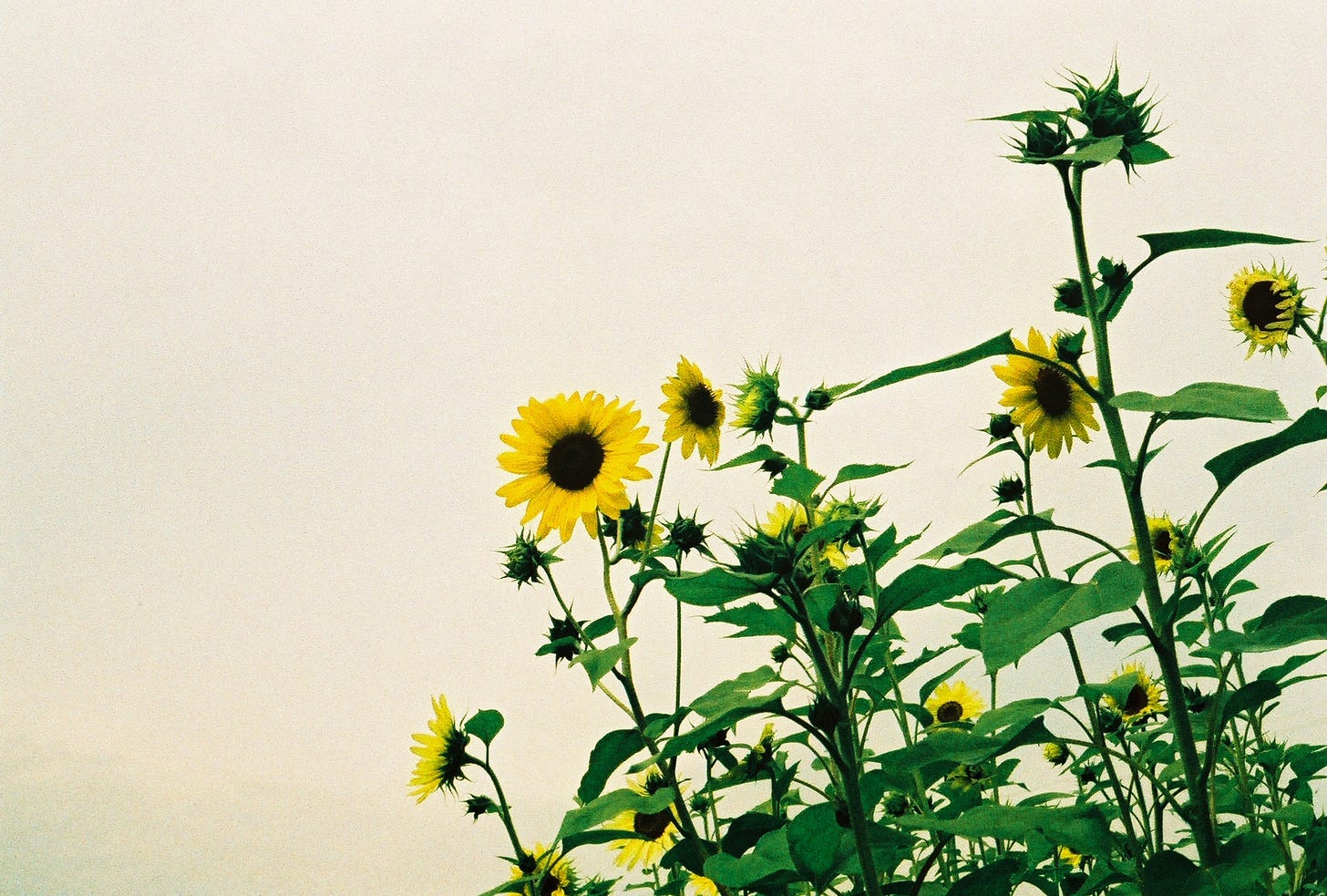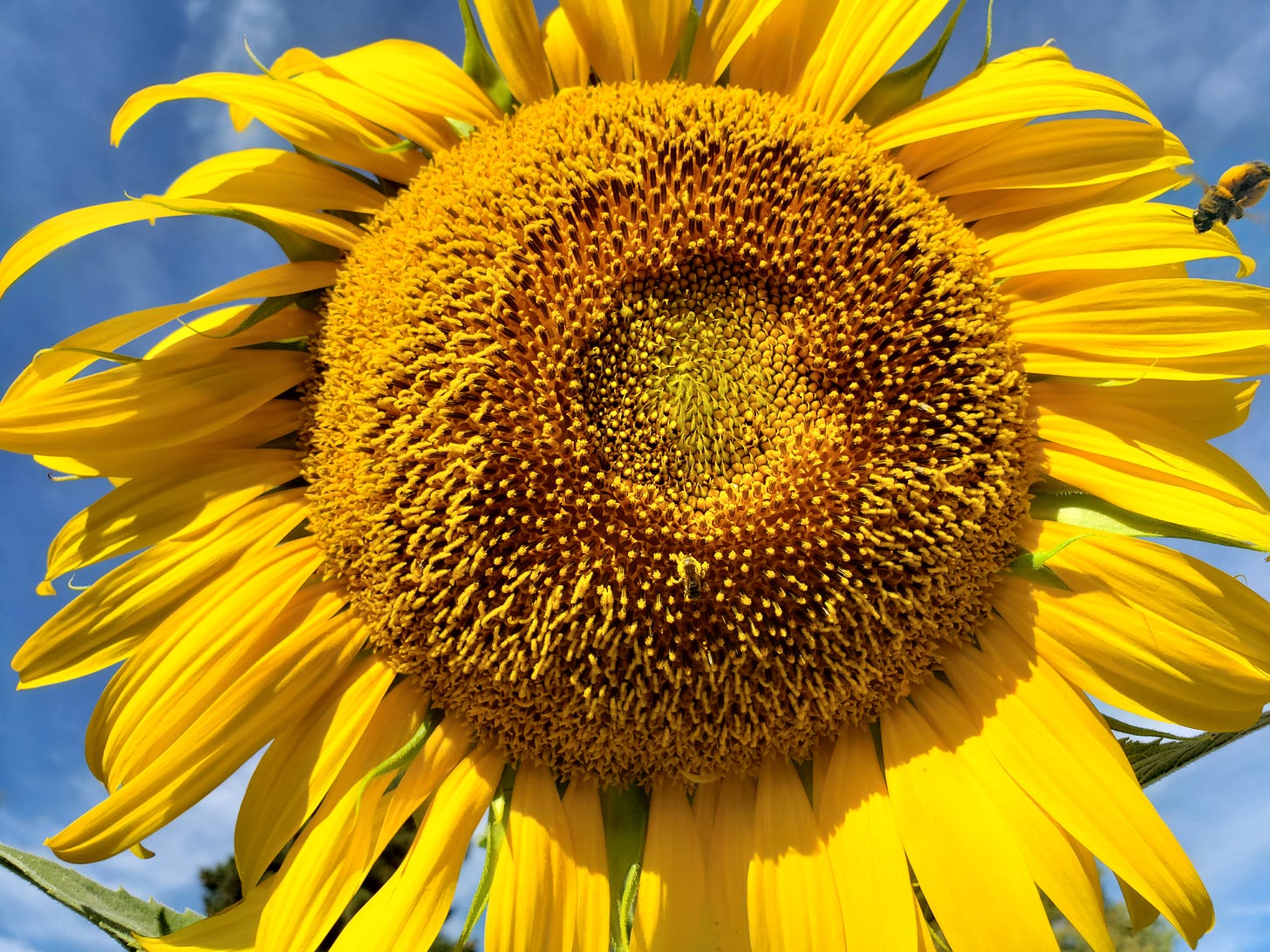Thanks for reading For the Birds! I publish this newsletter for free twice a month as both a writer and a creativity coach. My goal is to write a newsletter that supports your creative impulse while enriching your experience of being a human in the world. That means I craft these issues with the full scope of creativity in mind: the needs, the joys, the struggles, the inspirations, and the invitations for more resiliency.
The best way to support this work is by becoming a paid subscriber! It’s hella good karma, too. Gain access to twice as many monthly posts, and show your love of For the Birds, by upgrading your subscription.
Here’s something true about me: I can get really obsessive about plants, and not in a cute way. From growing vegetables to maintaining the shrubs & flowers & other flora already living in our small, rented yard, I go from calm to completely tormented the moment I notice anything slightly off. Pimply leaves, stunted blooms, yellow where I expected to see green; any and all of it sets me off on the frantic hunt for whatever’s going wrong. For whatever I must be doing wrong.
I chuckled a little typing that last sentence, because it seems so obviously connected to some of the hardest aspects of being a writer and pursuing publication: That feeling of not understanding the relationship between my efforts and the results, and the misery such confusion causes. When I’m in a certain state of mind, a state I’m fairly susceptible to, the question is the same whether I’m looking at a Kalanchoe or a rejection letter: am I not trying hard enough? It’s a question that fizzles around the edges, impossible to answer head on because of its tendency to crackle and split.
It’s also a qualitative assessment masquerading as quantitative truth: The assumption (it happens so quickly I often don’t even notice it) that certain things can only mean that something’s wrong. If a plant isn’t looking ideal, something’s wrong. If I’m not getting published…
Regarding the plants, most of it can be explained. I’m highly sensitive, I stopped eating meat when I was only 13, and I have to re-process big feelings every time I see a dead raccoon or a “missing dog” poster. To state the obvious, there is a loud and very idealistic part of me that wants all living things to remain that way, alert and stewarded. I want every single animal to thrive outside my belly. I want plants to have good, leafy lives.
But there’s more:
Along the banister of our porch sits a handful of echeverias, many of which stem from the same two. Those originals had been nestled into a large bouquet of pastel flowers, sent to me by a dear friend after our sweet little black cat, Maika, passed away in June of 2019. Seeing succulents in a traditional bouquet moved me; I found their inclusion both elegant and surprising.
From the moment I received them, keeping the succulents alive long after the bouquet had served its purpose was bound to feel like keeping something else alive, too. His memory. Or my devotion. Or even, in a certain way, grief—how there are things in this world that we’d prefer not to get used to, even when getting used to promises relief.
It’s not a fair expectation—plants don’t live forever—and it mimics the self-frustration and blame I feel when I see anything at all happening in my little plant world that might be chalked up to my own actions, whether from negligence or ineptitude or genuine mistake.
But this isn’t an essay about obsession or self-blame; it’s an essay about assumption.
Earlier this year, we decided to go light on growing veggies and focus instead on my longtime favorite, sunflowers. I’ve loved these flowers for years, long before they would come to remind me of my sweet little orange cat, Boots, his face glowing at me through the veil. I loved these flowers long before I stood at the farmer’s market and was told, by a rational, left-brained vet tech who helped us tend his kidney disease during that final year, and who knew nothing of my love for these sunlit queens, that he had “transcended into the realm of sunflowers.”
Cats & flowers must have some cosmic, prehistoric association. They just make sense together. Like how my back makes sense against the soft grass, my eyes blooming toward the clouds, looking for a familiar shape.
In previous years, we’ve grown the monolithic gems in rows along the northeast corner of our front yard. Back when Maika passed, it was spring, and the flowers had already begun showing up in the writing. That year, we’d chosen distinct varieties and planted each one with precision—Sunshine, Radiance Hybrid, Strawberry Blonde Hybrid, Pike’s Peak, Solar Eclipse.
This year, with a single grab bag of random varieties all mixed together, we threw the seeds into one of our 4x4 raised beds. We left one measly square for arugula, which the deer won’t let get big; two squares for snap peas, which never caught a break this summer; and the rest are sunflowers.
A couple weeks ago, I reached out to my local Master Gardener group through an online portal, worried about what I’d been observing. Leaves that were browning, turning crinkly, and dropping off. An increase in wilting. A decrease in bright greens. I sent in thorough descriptions and a handful of photographs, bracing myself for the news. Right before the pandemic, I’d spent a year in the MG program, and while the emphasis on textbook learning didn’t exactly turn my newbie thumbs green, I did come away with some increased knowledge and vocabulary. Would the issue with our sunflowers prove biotic, or abiotic? What I’d been observing wasn’t uniform, and though I nervously anticipated learning what I was doing wrong—over or under-watering, creating undue stress; or maybe it was an issue of light and competition, born of my refusal to thin the stalks when they were still young—I was even more nervous to hear about pathogens, fungi or, oh my gawd, a bug problem. How would I wrap my brain around that last one? As you likely know, I love bugs; this after a life full of learning to fear them or find them gross, both of which I previously excelled at.
Ditching those fears and discomforts and discovering a pure and joyful love of bugs has become an integral part of who I am. Waiting to hear back from the MGs, I was nervous about facing the emotional mess of learning that one thing I love might be causing harm to another thing I love.
What I was even less prepared for, it turns out, was the truth. I received a thorough and extremely kind email from K, a local Community Horticulture Educator. That looks normal to me, she said, after spending time with my various photographs and ample concerns, nothing to worry about. The plants, she explained, are likely self-pruning during the hotter weeks of summer. It’s common for them to look wilted mid-day, even into the evening, before perking back up the next morning. The problems I had articulated and tried to capture via photograph weren’t, in fact, problems at all.
In other words: Nothing was wrong.
The idea that I could be seeing what I saw—loss here, decay there, a hint of imperfection throughout—and not be looking at something wrong or bad had not occurred to me. I’d been carrying around an image in my mind of how the sunflowers were supposed to look, and when they looked at all otherwise, I assumed that something was wrong.
But nothing was wrong.
I’d been carrying around an image, I see now, based on permanence, not growth. I’d been assessing biotic factors through abiotic eyes, so to say.
Keep doing what you are doing, K told me.
Nothing is wrong.
All of this is normal. The grief, the loss, the fear of more loss. The need to self-prune, to react when met with harsher weathers. The discomfort we feel when watching something we love change. When we watch our love change. The wanting to do our best, even amidst the changing.
Nothing is wrong. These circumstances are normal.
And there, in the garden of normalcy, is a single stem so vivid and bright and strong that you could pluck it right up and display it on your kitchen counter, where it would last for days.
It’s called, your best.
It’s normal. It’s real! Keep doing what you’re doing.
Good things to know about!
TEASER TRAILER: Be on the lookout this Thursday for an announcement about a new way for us to work together. Think: community, creativity, artistic liberation, and the very best parts of classroom learning…
A writing prompt for you
The sunflowers are inviting us to do some seasonal tending. Choose one or more of the following questions and journal, with curiosity, as you listen for a response:
Within the scope of your creativity, where might some self-pruning be called for? (Think: setting down what saps your energy and/or cutting away what no longer serves you.)
Alternatively, where might some self-pruning already be happening, and how will you celebrate—and reinforce—your good creative instincts?
What are you pollinating?
But really: When your work is witnessed by another person, what kind of fertilization takes place? What do you wish to promote? What do you hope gets carried elsewhere?
How might your creativity benefit from cross-pollination?
Cross-pollinate your creative impulses by spending some time in a genre or medium different than the one(s) you’re most familiar with. See if your local library has free magazines, snag one or two, and make a collage! Buy a one-time use disposable camera and take some actual film photos! Write some flash horror! Make something on the sidewalk in chalk: Impermanence! Be boundless, silly, or both.
Tell me what the prompt brings up…
Or what inspired / challenged you while reading today’s letter—I love hearing from you! If you’re on the site or in the Substack app, you can hit the “comment” button and share publicly. If you’re reading this via email, hitting “reply” keeps the conversation one-on-one.















🌻🌻🌻🌻🌻 your best!
Speaking as a gardener who harvested zero fruits and vegetables due to smarter than me squirrels and deer, I can only advise: 1. Plant more than you expect allowing for some happy insects (and as mentioned other local Earth passengers their fair share. 2. Plant even more sunflowers. My sunflower leaves were devoured by deer and yet all of them have a beyond-the-amazement ability to produce flowers somehow. 3. Plant lavender. Squirrels, deer do not like it; bumblebees by the thousands get their pollen fix. 4. Nothing is wrong.